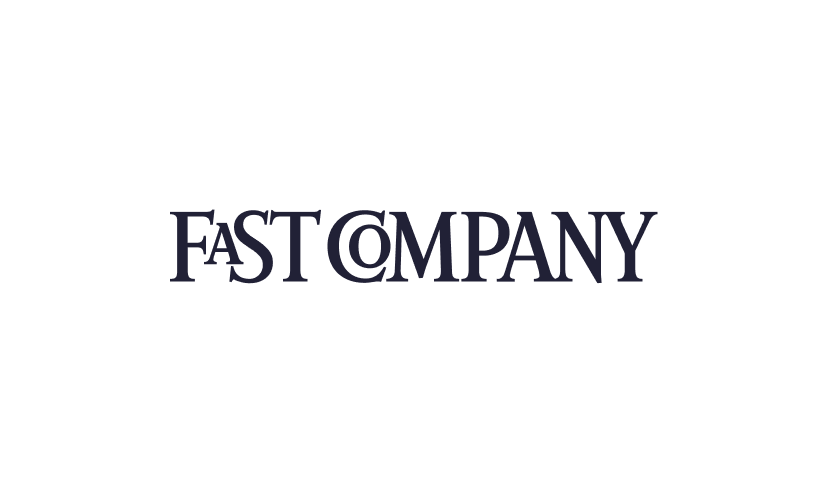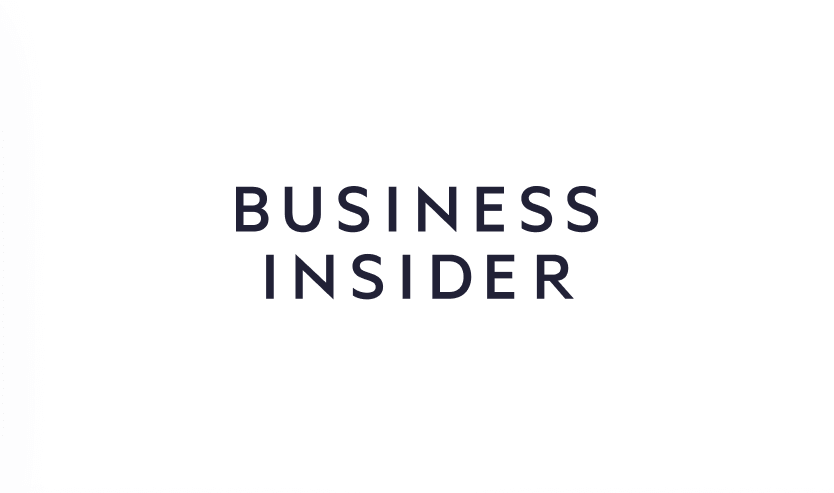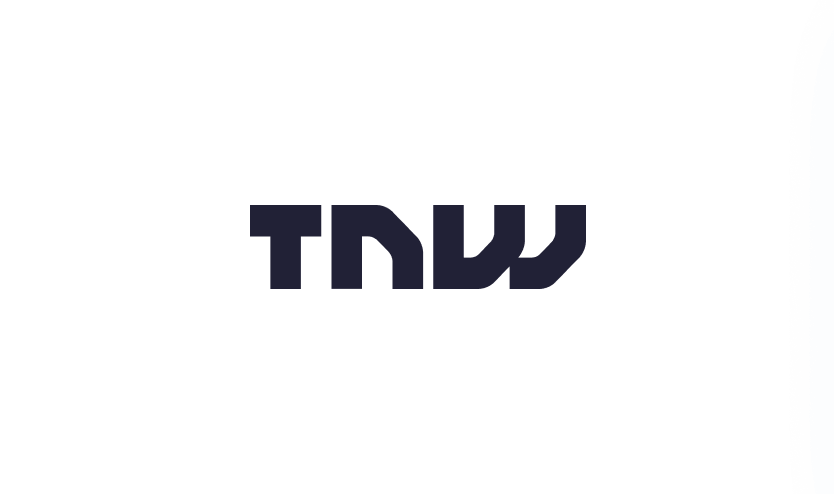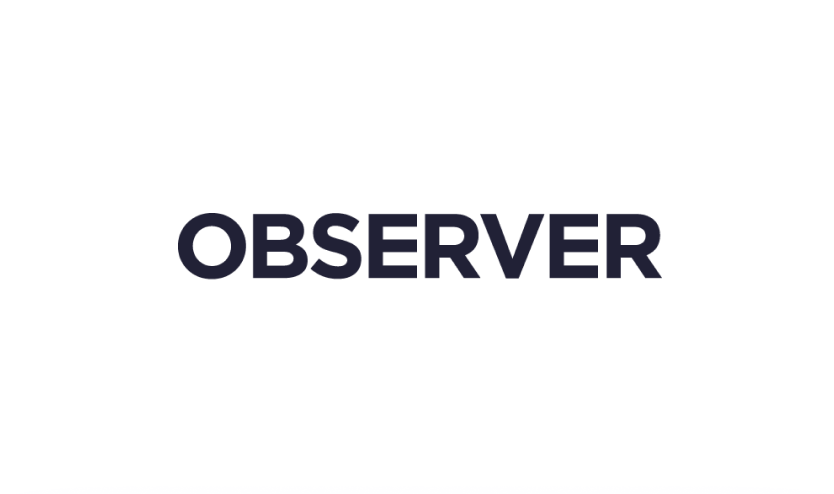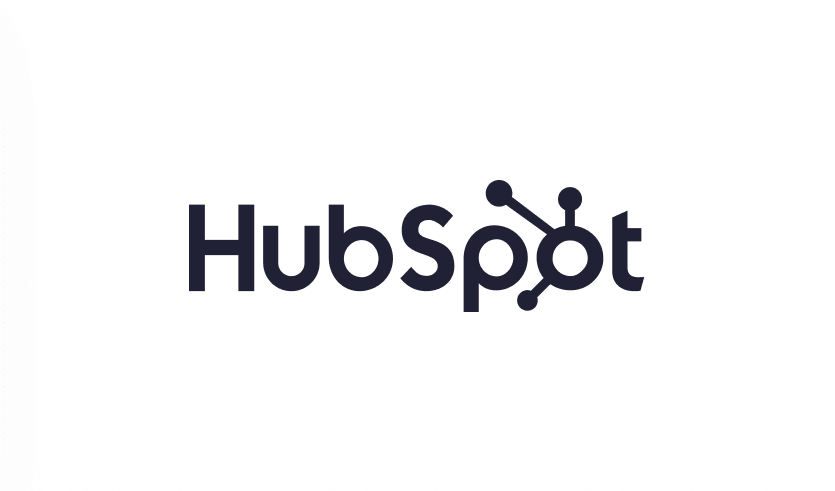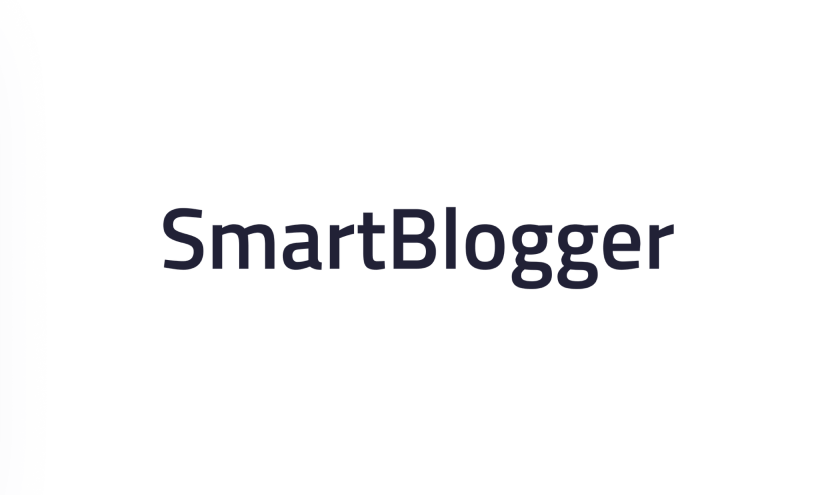Ecommerce Email Examples: 40+ Proven Templates That Drive Sales and Build Customer Loyalty
Ecommerce email marketing generates an average of $42 for every $1 spent, making it the highest-ROI marketing channel available. Yet most ecommerce brands struggle to create email programs that consistently drive revenue and build long-term customer relationships.
The difference between ecommerce email strategies that underperform and those that generate millions in revenue comes down to understanding the complete customer journey, implementing proven email flows, and optimizing based on data rather than assumptions.
I'm Chase Dimond, and over my career managing $200+ million in eCommerce email campaigns for 7-figure, 8-figure, and 9-figure brands, I've identified the exact email strategies and templates that consistently drive results. The best ecommerce email programs don't just send promotional blasts—they create personalized customer experiences that turn first-time buyers into loyal advocates.
In this comprehensive guide, I'll share 40+ ecommerce email examples that actually convert, break down the essential flows every ecommerce brand needs, and show you how to build a complete email marketing program that drives sustainable growth. Plus, I'll reveal how top brands use competitive intelligence tools like Inboox.ai to analyze competitor ecommerce strategies and create campaigns that outperform the market.
Table of Contents
What Makes Effective Ecommerce Email Marketing?
The Chase Dimond Ecommerce Email Framework
Essential Ecommerce Email Flows
40+ Ecommerce Email Examples by Type
Segmentation Strategies for Ecommerce
Ecommerce Email Metrics That Matter
Common Ecommerce Email Mistakes
FAQ: Ecommerce Email Best Practices
What Makes Effective Ecommerce Email Marketing?
Effective ecommerce email marketing goes beyond sending promotional messages. It creates a strategic communication system that guides customers through every stage of their journey—from awareness to purchase to loyalty.
The three pillars of ecommerce email success:
Strategic Automation: Right message, right person, right time
Revenue Optimization: Maximizing customer lifetime value
Customer Experience: Building relationships, not just transactions
Key Ecommerce Email Statistics
Revenue contribution: Email drives 20-30% of total ecommerce revenue
Customer acquisition cost: 5x cheaper than paid advertising
Retention impact: Email subscribers have 3x higher lifetime value
Automation ROI: Automated emails generate 320% more revenue than promotional emails
Mobile shopping: 65-70% of ecommerce email opens happen on mobile devices
Throughout my work with 7-figure, 8-figure, and 9-figure eCommerce brands, I've found that brands with comprehensive email programs generate 40-60% of their total revenue through email marketing—significantly higher than any other single channel.
The Complete Ecommerce Email Ecosystem
Every successful ecommerce email program includes these core components:
1. Automated Flows (50-60% of email revenue)
Welcome series
Abandoned cart recovery
Post-purchase sequences
Browse abandonment
Win-back campaigns
VIP/loyalty programs
2. Promotional Campaigns (30-40% of email revenue)
Sale announcements
New product launches
Seasonal promotions
Flash sales
Holiday campaigns
3. Content & Engagement (10-20% of email revenue)
Newsletters
Educational content
Customer stories
Behind-the-scenes updates
Community building
Chase's Revenue Rule: The 60/30/10 split—60% of ecommerce email revenue comes from automated flows, 30% from promotional campaigns, 10% from content emails. Brands that focus only on promotions leave 60% of potential revenue on the table.
The Chase Dimond Ecommerce Email Framework
After managing $200+ million in ecommerce email campaigns, I've developed a systematic approach that consistently drives results:
The 5-Phase Ecommerce Email System
Phase 1: Acquisition (List Building)
On-site popups and signup forms
Lead magnets and incentives
Social media integrations
Checkout email capture
SMS + email collection
Phase 2: Welcome & Nurture
Immediate welcome email
3-5 email welcome series
Brand story and values
First-purchase incentive
Product education
Phase 3: Conversion Acceleration
Browse abandonment
Cart abandonment (3-email sequence)
Product recommendations
Social proof emails
Urgency and scarcity
Phase 4: Post-Purchase Optimization
Order confirmation
Shipping updates
Delivery confirmation
Review requests
Cross-sell recommendations
Phase 5: Retention & Loyalty
Repeat purchase campaigns
VIP program enrollment
Win-back sequences
Referral programs
Anniversary and milestone emails
The Chase Dimond Customer Value Multiplier: Every additional automated flow you implement increases customer lifetime value by 15-25%. A complete 8-flow system can increase LTV by 200-300% compared to promotional emails alone.
Ecommerce Email Hierarchy of Impact
Based on my analysis of $200+ million in campaigns, here's where email efforts have the biggest revenue impact:
Abandoned cart recovery (30-40% of automated flow revenue)
Welcome series (25-30% of automated flow revenue)
Post-purchase (15-20% of automated flow revenue)
Browse abandonment (10-15% of automated flow revenue)
Win-back campaigns (5-10% of automated flow revenue)
This data-driven approach helps prioritize email development for maximum ROI.
Essential Ecommerce Email Flows
Let me break down the must-have automated flows for every ecommerce brand, with specific examples and performance benchmarks.
1. Welcome Email Series
Purpose: Convert new subscribers into first-time customers
Optimal sequence: 3-5 emails over 7-10 days
Expected performance:
Open rate: 50-70% (Email 1)
Click rate: 20-30% (Email 1)
First purchase conversion: 15-25%
Revenue per subscriber: $3-8
Welcome Email 1: The Immediate Welcome
Send timing: Immediately upon signup
Subject: Welcome to [Brand]! Here's 15% off 🎉
Email structure:
Hi [First Name],
Welcome to [Brand]! We're thrilled to have you.
Here's your exclusive welcome gift:
━━━━━━━━━━━━━━
15% OFF YOUR FIRST ORDER
CODE: WELCOME15
━━━━━━━━━━━━━━
[Shop Now Button]
What to expect from us:
✓ Exclusive subscriber-only sales
✓ New product early access
✓ Style tips and inspiration
✓ We email 2-3x per week
BESTSELLERS TO GET YOU STARTED:
[Product 1] - $XX [Shop]
[Product 2] - $XX [Shop]
[Product 3] - $XX [Shop]
Questions? Just reply to this email.
Welcome to the family,
[Brand Team]
P.S. - Your discount expires in 7 days. Don't miss out!
Why it works: Delivers on signup promise immediately. Clear discount code. Featured products remove decision paralysis. Time-limited offer creates urgency.
Key metric: This email should generate 15-20% of welcome series revenue.
Welcome Email 2: Brand Story & Social Proof
Send timing: 48 hours after Email 1
Subject: This is why we started [Brand]
Email structure:
[First Name], let me tell you our story.
[2-3 paragraphs sharing authentic brand origin story]
Today, we've helped [X] customers [specific outcome].
Here's what they're saying:
⭐⭐⭐⭐⭐ "[Testimonial]" - [Customer Name]
⭐⭐⭐⭐⭐ "[Testimonial]" - [Customer Name]
⭐⭐⭐⭐⭐ "[Testimonial]" - [Customer Name]
Haven't used your welcome discount yet?
CODE: WELCOME15 (Expires in 5 days)
[Shop Our Bestsellers Button]
[Founder Name]
Founder, [Brand]
Why it works: Builds emotional connection through story. Social proof reduces purchase anxiety. Reminds about discount without being pushy.
Welcome Email 3: Educational Value
Send timing: 4 days after Email 1
Subject: How to get the most from your [Product Category]
Email structure:
Hi [First Name],
Since you're interested in [product category], here are 5 tips to [achieve desired outcome]:
1. [Actionable tip with brief explanation]
2. [Actionable tip with brief explanation]
3. [Actionable tip with brief explanation]
4. [Actionable tip with brief explanation]
5. [Actionable tip with brief explanation]
Ready to get started?
Your WELCOME15 code expires in 3 days.
[Shop Now Button]
[Brand Team]
Why it works: Provides value beyond selling. Builds expertise and trust. Final discount reminder creates urgency.
2. Abandoned Cart Recovery Series
Purpose: Recover lost sales from cart abandoners
Optimal sequence: 3 emails over 48-72 hours
Expected performance:
Recovery rate: 10-30% of abandoned carts
Revenue impact: 15-25% of total email revenue
Average order value: Often higher than site average
Abandoned Cart Email 1: The Friendly Reminder
Send timing: 1-3 hours after abandonment
Subject: You left something behind...
Email structure:
Hi [First Name],
We noticed you left these items in your cart:
[Product 1 Image]
[Product Name] - $XX
[Product 2 Image]
[Product Name] - $XX
Cart Total: $XXX
[Complete My Purchase Button]
Still deciding? Here's what customers love:
⭐⭐⭐⭐⭐ "[Product review]"
⭐⭐⭐⭐⭐ "[Product review]"
✓ Free shipping on orders over $[X]
✓ 30-day money-back guarantee
✓ Secure checkout
[Return to Cart Button]
Questions? Reply to this email.
[Brand Team]
Why it works: Simple reminder without pressure. Shows exactly what they abandoned. Social proof reduces hesitation. Trust signals address objections.
Performance benchmark: Should recover 8-12% of abandoned carts.
Abandoned Cart Email 2: The Incentive
Send timing: 24 hours after abandonment
Subject: Here's 10% off to complete your order
Email structure:
[First Name], we really want you to have these items.
Here's 10% off to help you decide:
━━━━━━━━━━━━━━
CODE: CART10
Expires in 24 hours
━━━━━━━━━━━━━━
Your cart:
[Product images and details]
New total with discount: $XXX
You save: $XX
[Checkout Now Button]
Why customers love shopping with us:
✓ [Unique value prop 1]
✓ [Unique value prop 2]
✓ [Unique value prop 3]
⏰ This offer expires tomorrow.
[Complete Order Button]
[Brand Team]
Why it works: Sweetens the deal for hesitant buyers. Creates urgency with expiration. Shows savings clearly.
Performance benchmark: Should recover an additional 3-5% of abandoned carts.
Abandoned Cart Email 3: The Final Reminder
Send timing: 48 hours after abandonment
Subject: Final reminder: Your cart expires tonight
Email structure:
[First Name], this is your final reminder.
Your cart expires at midnight tonight:
[Product details and images]
After tonight:
❌ Cart will be deleted
❌ Items may sell out
❌ Discount code expires
[Last Chance to Checkout Button]
⏰ Less than [X] hours remaining
Don't let these items slip away.
[Complete Your Order Button]
[Brand Team]
P.S. - Have questions? Reply to this email or call [phone number].
Why it works: Final urgency creates action. Clear consequences. Multiple CTAs for final conversion push.
Performance benchmark: Should recover an additional 2-3% of abandoned carts.
3. Post-Purchase Series
Purpose: Increase customer satisfaction, encourage reviews, and drive repeat purchases
Optimal sequence: 4-6 emails over 30-60 days
Expected performance:
Review generation: 15-25% of customers
Repeat purchase rate: 15-30% within 90 days
Customer satisfaction: 20-30% improvement
Post-Purchase Email 1: Order Confirmation
Send timing: Immediately after purchase
Subject: ✓ Order confirmed! Order #[Number]
Email structure:
✓ ORDER CONFIRMED
Thank you for your order, [First Name]!
Order #[Number]
Order Date: [Date]
ITEMS ORDERED:
[Product 1] - Qty: X - $XX
[Product 2] - Qty: X - $XX
Subtotal: $XX
Shipping: $XX
Total: $XXX
SHIPPING TO:
[Customer Address]
Estimated delivery: [Date Range]
[Track Order Button]
Need to make changes? Contact us within 2 hours: [Contact Info]
Thank you for choosing [Brand]!
[Brand Team]
Why it works: Confirms purchase immediately. Clear order details. Sets delivery expectations. Provides contact information for issues.
Post-Purchase Email 2: Shipping Notification
Send timing: When order ships
Subject: 📦 Your order has shipped!
Email structure:
Good news, [First Name]!
Your order is on its way!
Order #[Number]
📦 TRACKING INFORMATION:
Carrier: [Carrier Name]
Tracking #: [Number]
[Track Your Package Button]
Estimated delivery: [Date]
What's inside:
[Product images]
While you wait, here's how to get the most from your purchase:
[Link to product care guide, styling tips, or usage instructions]
Questions? We're here to help: [Contact Info]
[Brand Team]
Why it works: Reduces "where is my order" inquiries. Creates anticipation. Provides value-add content while they wait.
Post-Purchase Email 3: Delivery Confirmation + Review Request
Send timing: 3-5 days after estimated delivery
Subject: How's everything? We'd love your feedback
Email structure:
Hi [First Name],
Your order should have arrived by now. How's everything?
We'd love to hear what you think!
[Product 1 Image]
[Product Name]
[Leave a Review Button]
[Product 2 Image]
[Product Name]
[Leave a Review Button]
Your feedback helps other customers shop with confidence.
🎁 As a thank you, here's 15% off your next order:
CODE: THANKS15
[Shop Again Button]
Not satisfied? We have a 30-day return policy.
[Contact Customer Service]
Thanks for choosing [Brand]!
[Brand Team]
Why it works: Timely request (after product received). Multiple review opportunities. Incentive for next purchase. Clear return policy if unhappy.
Performance benchmark: Should generate reviews from 15-25% of recipients.
Post-Purchase Email 4: Educational Content
Send timing: 10-14 days after purchase
Subject: Getting the most from your [Product]
Email structure:
Hi [First Name],
Now that you've had some time with your [Product], here are some tips to get even more value:
💡 TIP #1: [Specific usage tip]
[Brief explanation of benefit]
💡 TIP #2: [Care or maintenance tip]
[How this extends product life]
💡 TIP #3: [Advanced feature or hack]
[Unique way to use product]
[Link to full guide or video tutorials]
PAIRS PERFECTLY WITH:
Customers who bought [Product] also love:
[Complementary Product 1] - $XX [Shop]
[Complementary Product 2] - $XX [Shop]
Questions? Reply to this email anytime.
[Brand Team]
Why it works: Increases product satisfaction through education. Natural cross-sell opportunity. Positions brand as helpful expert.
Post-Purchase Email 5: Repeat Purchase Incentive
Send timing: 30-45 days after purchase (adjust based on replenishment cycle)
Subject: Time to restock? Here's 20% off
Email structure:
Hi [First Name],
It's been a month since your last order. Running low on [Product]?
Here's 20% off to restock:
━━━━━━━━━━━━━━
CODE: RESTOCK20
Expires in 7 days
━━━━━━━━━━━━━━
[Reorder Your Favorites Button]
YOUR PREVIOUS ORDER:
[Product 1] - [Reorder Button]
[Product 2] - [Reorder Button]
Want to try something new?
[New arrivals or complementary products]
[Shop Now Button]
[Brand Team]
P.S. - Subscribe & Save 15% on every order: [Subscription link]
Why it works: Timely based on product usage cycle. Easy reorder. Introduces subscription option. New product discovery.
4. Browse Abandonment Flow
Purpose: Recover potential customers who browsed but didn't add to cart
Optimal sequence: 1-2 emails over 24-48 hours
Expected performance:
Conversion rate: 2-5%
Revenue impact: 5-10% of automated flow revenue
Browse Abandonment Email
Send timing: 4-6 hours after browse session
Subject: Still interested in [Product Category]?
Email structure:
Hi [First Name],
We noticed you were checking out our [Product Category].
Here's what you were looking at:
[Product 1 Image]
[Product Name] - $XX
⭐⭐⭐⭐⭐ ([X] reviews)
[Shop Now]
[Product 2 Image]
[Product Name] - $XX
⭐⭐⭐⭐⭐ ([X] reviews)
[Shop Now]
Still deciding? Here's what helps:
✓ Free shipping over $[X]
✓ 30-day returns, no questions asked
✓ [X] customers love these items
[Continue Shopping Button]
Need help choosing? Reply to this email.
[Brand Team]
Why it works: Reminds about browsed items. Social proof reduces hesitation. Clear benefits. Offers help.
5. Win-Back Campaign
Purpose: Re-engage lapsed customers
Optimal sequence: 3-4 emails over 30 days
Expected performance:
Reactivation rate: 5-15%
Revenue from reactivated: 10-20% of their previous LTV
Win-Back Email 1: We Miss You
Send timing: 60-90 days since last purchase
Subject: We miss you—here's 25% off to come back
Email structure:
[First Name], we've missed you!
It's been a while since your last order, and we wanted to reach out.
━━━━━━━━━━━━━━
WELCOME BACK: 25% OFF
CODE: WELCOME25
━━━━━━━━━━━━━━
[Shop Now Button]
HERE'S WHAT YOU'VE MISSED:
📦 [X] new products launched
⭐ [X] 5-star reviews added
🎉 [Major update or improvement]
BESTSELLERS RIGHT NOW:
[Product 1] - [Shop]
[Product 2] - [Shop]
[Product 3] - [Shop]
Your discount expires in 7 days.
[Come Back Button]
We'd love to have you back.
[Brand Team]
P.S. - If our emails aren't working for you, [update preferences] or [unsubscribe]. No hard feelings.
Why it works: Acknowledges absence. Significant incentive. Shows what's new. Respectful of preference.
Performance benchmark: Should reactivate 5-10% of lapsed customers.
Win-Back Email 2: Feedback Request
Send timing: 7 days after Email 1 (if no purchase)
Subject: Quick question: Why haven't you shopped with us?
Email structure:
Hi [First Name],
We noticed you haven't been back to shop with us.
Can you help us understand why?
[One-click feedback options:]
→ Found what I needed elsewhere
→ Too expensive
→ Not what I was looking for
→ Poor previous experience
→ Just browsing
→ Other reason
Your feedback takes 2 seconds and really helps us improve.
Still interested in coming back?
Here's 30% off—our biggest win-back offer:
CODE: COMEBACK30
[Shop With Discount Button]
Thank you for your time.
[Brand Team]
Why it works: Shows you care about feedback. Easy one-click responses. Escalating discount. Respectful approach.
Win-Back Email 3: Final Offer
Send timing: 14 days after Email 1 (if no purchase)
Subject: Final offer: 30% off before we say goodbye
Email structure:
[First Name], this is our final email.
We'd love to win you back, so here's our best offer:
30% OFF EVERYTHING
CODE: FINAL30
Expires in 3 days
[Last Chance to Shop Button]
If you don't want to hear from us anymore, we understand.
[Update email preferences]
[Unsubscribe]
But if you're willing to give us another chance, we'd be honored.
[Shop One More Time Button]
Thank you for being a customer.
[Brand Team]
Why it works: Clear finality. Best possible offer. Respectful of their choice. Easy exit options.
Promotional Campaign Examples
Beyond automated flows, strategic promotional campaigns drive 30-40% of ecommerce email revenue.
New Product Launch Campaign
Subject: Introducing [Product Name] 🎉
Email structure:
IT'S HERE!
After [X] months of development, we're thrilled to introduce:
[PRODUCT NAME]
[Large hero product image]
[2-3 paragraphs explaining what makes this product special, the problem it solves, and unique features]
EARLY ACCESS PRICING:
Regular: $XXX
Launch Special: $XXX (Save $XX)
[Shop Launch Price Button]
What makes [Product] different:
✓ [Unique feature 1]
✓ [Unique feature 2]
✓ [Unique feature 3]
✓ [Unique feature 4]
"[Beta tester testimonial]" - [Name]
⏰ Launch pricing ends [Date]
[Get Yours Now Button]
Limited initial inventory—order today for [delivery timeframe] delivery.
[Brand Team]
Why it works: Builds excitement. Clear value proposition. Launch pricing creates urgency. Social proof from beta testers.
Flash Sale Campaign
Subject: ⚡ Flash Sale: 4 hours only—40% off
Email structure:
⚡ FLASH SALE ⚡
40% OFF EVERYTHING
Next 4 hours only
CODE: FLASH40
[Shop Now Button]
Sale ends: Today at [Time]
⏰ [Countdown Timer]
SHOP BY CATEGORY:
[Category 1] → [Shop]
[Category 2] → [Shop]
[Category 3] → [Shop]
[Category 4] → [Shop]
BESTSELLERS:
[Product grid with 6-8 items]
This discount won't last—shop before time runs out!
[Shop Flash Sale Button]
[Brand Team]
Why it works: Extreme urgency. Simple offer. Countdown timer. Multiple entry points. Category navigation.
Seasonal Holiday Campaign
Subject: 🎁 Holiday Gift Guide: Gifts they'll actually love
Email structure:
🎁 HOLIDAY GIFT GUIDE 🎁
25% off everything + free gift wrapping
CODE: HOLIDAY25
[Shop Gift Guide Button]
GIFTS BY RECIPIENT:
━━━━━━━━━━━━━━
FOR HER
━━━━━━━━━━━━━━
[Product 1] - $XX [Shop]
[Product 2] - $XX [Shop]
[Product 3] - $XX [Shop]
━━━━━━━━━━━━━━
FOR HIM
━━━━━━━━━━━━━━
[Product 1] - $XX [Shop]
[Product 2] - $XX [Shop]
[Product 3] - $XX [Shop]
━━━━━━━━━━━━━━
FOR KIDS
━━━━━━━━━━━━━━
[Product 1] - $XX [Shop]
[Product 2] - $XX [Shop]
[Product 3] - $XX [Shop]
🎁 FREE GIFT WRAPPING on all orders
📦 Order by [Date] for guaranteed holiday delivery
[Shop Full Gift Guide Button]
Need help choosing? Reply to this email.
[Brand Team]
Why it works: Solves holiday shopping problem. Organized by recipient. Shipping deadline creates urgency. Gift wrapping removes friction.
Segmentation Strategies for Ecommerce
Segmentation is the key to maximizing email revenue. Here's how to segment for maximum impact:
The Chase Dimond Segmentation Framework
Level 1: Engagement-Based Segmentation
Highly engaged (opened 50%+ of last 10 emails): Send 3-5x per week
Moderately engaged (opened 20-50%): Send 2-3x per week
Low engaged (opened <20%): Send 1x per week, focus on win-back
Level 2: Purchase History Segmentation
New customers (0-30 days since first purchase): Post-purchase series, cross-sells
Active customers (1-6 months since last purchase): Replenishment, new products
Lapsed customers (6+ months): Win-back campaigns
VIP customers (Top 10-20% by LTV): Exclusive offers, early access
Level 3: Product Category Segmentation
Category preferences: Send relevant product launches and promotions
Price sensitivity: Different discount depths based on purchase history
Brand affinity: Match messaging to lifestyle and values
Level 4: Behavioral Segmentation
Cart abandoners: Recovery sequences with incentives
Browse abandoners: Product recommendations
Email clickers: More frequent sends, they're interested
Review writers: Community builders, brand advocates
Chase's Segmentation ROI Principle: Every additional layer of segmentation increases revenue per recipient by 15-25%. A 4-level segmentation system can generate 2-3x more revenue than unsegmented broadcasts.
Segmentation Performance Data
From my $200+ million in campaigns:
Segmented vs. Unsegmented Performance:
Open rate: +35-50% improvement
Click rate: +100-200% improvement
Conversion rate: +150-300% improvement
Revenue per email: +200-400% improvement
Most valuable segments to create first:
VIP customers (top 10% by LTV) - 5-10x ROI
Cart abandoners - 3-5x ROI
New customers (first 30 days) - 3-4x ROI
Lapsed customers (90+ days) - 2-3x ROI
Ecommerce Email Metrics That Matter
Track these metrics to optimize your ecommerce email program:
Primary Revenue Metrics
1. Revenue Per Email (RPE)
Formula: Total revenue / Emails sent
Benchmark: $0.10-0.50 for promotional, $0.50-2.00 for automated flows
Goal: Increase through segmentation and optimization
2. Email Attribution Rate
Formula: Email-driven revenue / Total revenue
Benchmark: 20-30% for mature programs
Goal: Grow email's share of total revenue
3. Customer Lifetime Value (LTV)
Formula: Average purchase value × Average purchase frequency × Average customer lifespan
Email impact: Email subscribers typically have 2-3x higher LTV
Goal: Increase through retention emails
Engagement Metrics
4. Open Rate
Promotional: 18-25%
Automated flows: 40-60%
Improvement levers: Subject lines, send time, segmentation
5. Click-Through Rate (CTR)
Promotional: 2-5%
Automated flows: 8-15%
Improvement levers: Content relevance, CTA optimization, personalization
6. Conversion Rate
Promotional: 1-3%
Automated flows: 3-8%
Improvement levers: Landing page optimization, offer strength, urgency
List Health Metrics
7. List Growth Rate
Formula: (New subscribers - Unsubscribes) / Total subscribers
Benchmark: 2-5% monthly
Goal: Consistent positive growth
8. Unsubscribe Rate
Benchmark: <0.5% per email
Warning sign: >0.5% indicates over-mailing or poor relevance
Goal: Minimize through value and segmentation
9. Spam Complaint Rate
Benchmark: <0.1%
Critical: >0.1% damages deliverability
Goal: Near zero through permission-based practices
The Chase Dimond 70/20/10 Metric Focus Rule: Spend 70% of your optimization time on revenue metrics, 20% on engagement metrics, 10% on list health. Revenue is the ultimate scorecard.
Common Ecommerce Email Mistakes
After analyzing thousands of ecommerce email programs through Inboox.ai and my own client work, here are the most costly mistakes:
1. Promotional-Only Strategy
The mistake: Only sending promotional campaigns, no automated flows.
The cost: Missing 60% of potential email revenue (automated flows generate 60% of email revenue).
The fix: Implement core automated flows: welcome, cart abandonment, post-purchase, browse abandonment, win-back.
Impact: Brands adding abandoned cart alone see 15-25% revenue increase.
2. No Segmentation
The mistake: Sending same message to entire list regardless of behavior.
The cost: 50-70% lower engagement and revenue per email.
The fix: Start with basic segmentation: engaged vs. unengaged, customers vs. prospects, VIP vs. regular.
Impact: Basic segmentation increases revenue per email by 100-200%.
3. Weak Welcome Series
The mistake: Single generic welcome email or no welcome series at all.
The cost: 60-70% lower first-purchase conversion rates.
The fix: Implement 3-5 email welcome series over 7-10 days with education, social proof, and incentives.
Impact: Robust welcome series converts 15-25% of new subscribers vs. 5-8% with weak welcome.
4. No Cart Recovery
The mistake: Not recovering abandoned carts (69% of carts are abandoned).
The cost: Leaving 15-25% of potential revenue on the table.
The fix: Implement 3-email cart recovery sequence over 48-72 hours.
Impact: Cart recovery alone can increase total revenue by 10-20%.
5. Ignoring Post-Purchase
The mistake: No communication between purchase and next promotional campaign.
The cost: Lower repeat purchase rates and customer lifetime value.
The fix: Implement post-purchase series: confirmation, shipping, delivery, review request, education, repeat purchase incentive.
Impact: Post-purchase series increases repeat purchase rate by 30-50%.
6. Over-Promotion
The mistake: Constant sales and discounts, training customers to wait for deals.
The cost: 40-50% lower margins, reduced brand equity, discount-addicted customers.
The fix: Strategic promotional calendar (4-6 major promotions per year), focus on value over discounts, implement non-discount incentives (free shipping, gifts, early access).
7. Poor Mobile Optimization
The mistake: Emails don't render well on mobile devices (65-70% of opens).
The cost: 50-60% lower mobile conversion rates.
The fix: Mobile-first design, responsive templates, large touch targets, compressed images, single-column layouts.
Impact: Mobile optimization increases mobile conversion by 100-200%.
8. No List Hygiene
The mistake: Never removing unengaged subscribers.
The cost: Lower deliverability, damaged sender reputation, wasted sends.
The fix: Sunset sequence for 90-120 day non-openers, remove after 180 days of no engagement.
Impact: List hygiene improves deliverability and engagement rates by 20-30%.
Analyzing Competitor Ecommerce Strategies
Want to see what's working in your industry? One of the most powerful strategies I use is competitive ecommerce analysis through Inboox.ai.
Inboox.ai allows you to subscribe to competitors' email lists and automatically organize their campaigns and flows in one dashboard. This gives you insight into:
Complete email flow architecture
Promotional calendar and timing
Discount strategies and depth
Messaging and positioning approaches
Design trends and templates
Segmentation strategies
New product launch sequences
I recommend using Inboox.ai to analyze at least 10-15 competitors' ecommerce email programs to identify:
Flow gaps in your program vs. competitors
Promotional frequency and timing patterns
Discount strategies (when, how much, how often)
Messaging frameworks that resonate
Opportunities to differentiate and outperform
For more ecommerce email strategies, subscribe to my email marketing newsletter where I break down winning ecommerce campaigns every week.
Case Study: $4.2M Revenue Growth in 6 Months
Let me share a real example from my work with a fashion ecommerce brand.
The Challenge: The brand had 85,000 email subscribers but only sent promotional campaigns 2-3 times per month. Email revenue was $400K annually (5% of total revenue). No automated flows existed except basic order confirmations.
The Strategy: We implemented a complete ecommerce email program:
Automated flows added:
5-email welcome series
3-email cart abandonment sequence
Browse abandonment flow
6-email post-purchase series
VIP program enrollment
4-email win-back campaign
Promotional optimization:
Increased frequency to 2-3x per week
Implemented segmentation (engaged/unengaged, VIP/regular, new/returning)
Strategic promotional calendar
Mobile-first redesign
Segmentation strategy:
VIP tier (top 15% by LTV): Exclusive early access, deeper discounts
New customers: Extended onboarding, cross-sell focus
Lapsed customers: Aggressive win-back offers
Price-sensitive: Discount-heavy campaigns
Value-seekers: Free shipping and bundles
The Results (6-month period):
Revenue metrics:
Email revenue: $400K → $4.6M annually (run rate)
Email attribution: 5% → 32% of total revenue
Revenue per email: $0.12 → $0.78 (+550%)
Flow performance:
Welcome series: $680K (15% of email revenue)
Cart abandonment: $1.2M (26% of email revenue)
Post-purchase: $520K (11% of email revenue)
Browse abandonment: $380K (8% of email revenue)
Win-back: $240K (5% of email revenue)
Promotional campaigns: $1.58M (35% of email revenue)
Engagement improvements:
Overall open rate: 16% → 28% (+75%)
Click-through rate: 1.9% → 4.7% (+147%)
Unsubscribe rate: 0.8% → 0.3% (-62%)
Customer metrics:
Customer lifetime value: +85%
Repeat purchase rate: 18% → 34%
Average order value: $78 → $94 (+21%)
Customer acquisition cost: -40% (email drove more organic growth)
Key Learnings:
Automated flows drove 65% of email revenue (vs. 35% from campaigns)
Cart abandonment alone generated $1.2M (nearly 3x previous total email revenue)
VIP segmentation increased LTV by 120% for top customers
Mobile optimization increased mobile conversion by 180%
Welcome series converted 22% of new subscribers to first purchase
Post-purchase series increased repeat purchase rate from 18% to 34%
ROI Analysis:
Program setup cost: $45,000 (strategy, implementation, design)
Annual platform cost: $18,000
First-year additional revenue: $4.2M
ROI: 6,567%
Chase's Ecommerce Transformation Insight: The difference between ecommerce brands doing $5M and $50M+ often isn't traffic—it's email program sophistication. This brand 10x'd email revenue in 6 months by implementing flows that should be standard.
For more case studies like this, subscribe to my newsletter where I break down winning ecommerce strategies weekly.
Tools and Resources for Ecommerce Email Success
Here are the tools I recommend for building exceptional ecommerce email programs:
Email Service Providers (ESPs)
Omnisend: Best for ecommerce, powerful automation
Klaviyo: Advanced segmentation and analytics
Drip: Strong personalization capabilities
ActiveCampaign: Good automation, CRM integration
Competitive Intelligence
Inboox.ai: Track competitor ecommerce email strategies and flows
Email Design Tools
Figma: Email template design
Canva: Quick graphics
Litmus: Email testing across clients
Personalization and Testing
Dynamic Yield: Advanced personalization
Optimizely: A/B testing platform
Convert: Email optimization
Analytics and Attribution
Google Analytics: Traffic and conversion tracking
Triple Whale: Ecommerce attribution
Northbeam: Multi-touch attribution
FAQ: Ecommerce Email Best Practices
How often should ecommerce brands send emails?
Optimal frequency depends on segmentation:
For highly engaged subscribers:
Promotional: 2-3x per week
Total including automated: 3-5x per week
For moderately engaged:
Promotional: 1-2x per week
Focus on triggered/automated emails
For low engagement:
Promotional: 1x per week maximum
Focus on win-back campaigns
The Chase Dimond Frequency Rule: Segment by engagement and send proportionally. Highly engaged subscribers want more emails (they open them!). Low engagement subscribers need fewer, more targeted emails.
Warning signs of over-mailing:
Open rates declining >20%
Unsubscribe rates >0.5%
Spam complaints increasing
What automated flows are essential for ecommerce?
The 6 must-have flows (in priority order):
Welcome series (3-5 emails) - Converts new subscribers
Cart abandonment (3 emails) - Recovers lost sales
Post-purchase (4-6 emails) - Drives repeat purchases
Browse abandonment (1-2 emails) - Captures interest
Win-back (3-4 emails) - Reactivates lapsed customers
VIP/loyalty (ongoing) - Maximizes high-value customers
Implementation priority: Start with cart abandonment (biggest ROI), then welcome, then post-purchase.
Expected impact: Complete 6-flow system generates 50-70% of total email revenue.
How much discount should I offer in abandoned cart emails?
Strategic approach:
Email 1 (1-3 hours): No discount - Just reminder
Converts: 8-12% of abandoners
Email 2 (24 hours): Small incentive - 10% off or free shipping
Converts: Additional 3-5%
Email 3 (48 hours): Stronger incentive - 15% off
Converts: Additional 2-3%
Total recovery: 13-20% with this tiered approach
Key insight: Don't lead with discount. Many customers just need a reminder. Starting with 10-15% in first email leaves no room to escalate and trains discount-seeking behavior.
Alternative to discounts:
Free shipping (often more effective)
Free gift with purchase
Extended return window
Loyalty points bonus
How do I build my ecommerce email list?
High-converting list building tactics:
On-site capture:
Exit-intent popups (10% offer)
Welcome mat/hello bar
Post-purchase signup (checkbox at checkout)
Account creation prompts
Incentives that work:
10-15% off first purchase
Free shipping on first order
Exclusive early access
Free gift with purchase
Entry to giveaway
Strategic placement:
Homepage
Product pages
Blog posts
Cart page
After add-to-cart
Benchmark conversion rates:
Exit-intent popup: 2-5%
Welcome mat: 1-3%
Inline forms: 1-2%
Chase's List Building Rule: 10-15% discount on first purchase is the sweet spot. Lower and conversion suffers. Higher and you attract discount-seekers who never buy full price.
What's a good email open rate for ecommerce?
Benchmark open rates:
Promotional campaigns:
Excellent: 25%+
Good: 20-25%
Average: 15-20%
Poor: <15%
Automated flows:
Welcome series: 50-70%
Cart abandonment: 40-50%
Post-purchase: 45-60%
Browse abandonment: 30-40%
Win-back: 20-30%
Factors affecting open rates:
Segmentation (biggest impact: +30-50%)
Subject lines (+15-25%)
Send time (+5-15%)
List hygiene (+10-20%)
Sender reputation
Improvement priority:
Remove unengaged subscribers (90+ days no opens)
Implement engagement-based segmentation
A/B test subject lines
Optimize send times per segment
How do I prevent discount addiction in customers?
Strategic discount management:
Frequency limits:
Major sales: 4-6 times per year
Flash sales: Once per month maximum
Category promotions: Weekly, rotated
Non-discount incentives:
Free shipping thresholds
Gifts with purchase
Loyalty points
Early access to new products
Exclusive products/bundles
Free returns/extended return window
Discount tiers:
New customers: 10-15% welcome offer
Repeat customers: Loyalty points, not constant discounts
VIP customers: Exclusive access, not deeper discounts
Win-back: 20-30% (aggressive recovery)
The 70/30 rule: 70% of emails should provide value without discounts, 30% can include promotions.
How long should my welcome email series be?
Optimal welcome series: 3-5 emails over 7-10 days
3-email series (minimum viable):
Email 1: Welcome + discount (immediate)
Email 2: Best sellers + social proof (day 2-3)
Email 3: Final discount reminder (day 5-7)
5-email series (optimal):
Email 1: Welcome + discount (immediate)
Email 2: Brand story + social proof (day 2)
Email 3: Education/value content (day 4)
Email 4: Category showcase (day 6)
Email 5: Final reminder + urgency (day 8-10)
Performance by series length:
1 email: 5-8% first purchase conversion
3 emails: 12-18% conversion
5 emails: 18-25% conversion
7+ emails: Diminishing returns, subscriber fatigue
Chase's Welcome Series Principle: 5 emails is the sweet spot. Longer series rarely improve conversion proportionally and risk overwhelming new subscribers.
Should I segment my list? How?
Absolutely. Segmentation is the highest-ROI email tactic.
Start with these 4 segments:
Engagement level:
High (50%+ open rate): Send more often
Medium (20-50%): Standard frequency
Low (<20%): Send less, focus on re-engagement
Customer status:
Prospects (never purchased)
New customers (0-60 days since first purchase)
Active customers (purchased in last 90 days)
Lapsed customers (90+ days since last purchase)
Purchase value:
VIP (top 10-20% by LTV)
Regular customers
One-time buyers
Product category preference:
Based on browsing/purchase history
Send relevant product launches and content
Segmentation ROI:
Basic segmentation (4 segments above): +100-200% revenue per email
Advanced segmentation (10+ segments): +300-500% revenue per email
Implementation priority: Start with engagement segmentation (easiest, high impact), then customer status, then value tiers, then category.
The Future of Ecommerce Email Marketing
Several trends are shaping the future of ecommerce email:
AI-Powered Personalization at Scale
Predictive product recommendations: AI determines optimal products per recipient
Dynamic send time optimization: ML learns best send time for each subscriber
Automated segmentation: AI creates micro-segments based on behavior patterns
Content generation: AI writes personalized copy variations
Lifetime value prediction: Target customers by predicted future value
Advanced Automation and Integration
Omnichannel orchestration: Email + SMS + push + ads working together
Real-time behavioral triggers: Instant response to on-site actions
Predictive abandonment: Intervene before cart abandonment
Automated A/B testing: AI tests variations continuously
Smart inventory triggers: Emails based on stock levels
Privacy-First Marketing
First-party data emphasis: Owned customer data becomes more valuable
Zero-party data collection: Explicit preferences and intent
Privacy-compliant personalization: Effective targeting without third-party cookies
Transparent value exchange: Clear benefits for data sharing
Interactive and Immersive Experiences
AMP for Email: Shopping directly in inbox
AR product visualization: Try products virtually
Live content updates: Real-time pricing and inventory
Gamification: Interactive experiences driving engagement
Stay current with ecommerce email trends by subscribing to my newsletter where I cover the latest innovations.
Your Ecommerce Email Action Plan
Ready to build a complete ecommerce email program? Here's your 90-day roadmap:
Month 1: Foundation and Quick Wins
Week 1: Audit and Strategy
Audit current email program
Identify gaps in flows
Benchmark current metrics
Create implementation roadmap
Week 2: Cart Abandonment (Biggest ROI)
Implement 3-email cart recovery sequence
Set up tracking and attribution
Test and optimize
Week 3: Welcome Series
Create 3-5 email welcome sequence
Design templates
Set up automation
Week 4: Segmentation
Implement engagement-based segments
Create customer status segments
Set up sending rules by segment
Month 2: Flow Expansion
Week 5: Post-Purchase Series
Create 4-6 email post-purchase flow
Include review requests and cross-sells
Set up automation
Week 6: Browse Abandonment
Implement browse recovery flow
Test timing and messaging
Measure impact
Week 7: Win-Back Campaign
Create 3-4 email win-back sequence
Identify lapsed customers (90+ days)
Launch campaign
Week 8: VIP/Loyalty Program
Define VIP criteria (top 10-20% by LTV)
Create exclusive VIP benefits
Build VIP nurture sequence
Month 3: Optimization and Scale
Week 9: Promotional Calendar
Plan 6-month promotional calendar
Balance promotions with value content
Coordinate with seasonal events
Week 10: Advanced Segmentation
Add product category segments
Implement price sensitivity segments
Create behavioral triggers
Week 11: Testing Program
Set up A/B testing framework
Test subject lines, offers, timing
Document winning variations
Week 12: Analysis and Refinement
Review 90-day performance
Identify top-performing flows
Plan next quarter improvements
Ongoing: Competitive Intelligence
Use Inboox.ai to monitor competitor strategies
Test winning elements from top performers
Stay updated on industry benchmarks
Continuously refine based on data
Key Takeaways: Ecommerce Email Success
Essential principles for high-performing ecommerce email programs:
✅ Automated flows first: Generate 60% of email revenue—implement before ramping promotions
✅ Cart recovery is critical: Recover 15-25% of abandoned carts with 3-email sequence
✅ Segment ruthlessly: Basic segmentation doubles revenue per email
✅ Welcome series converts: 3-5 emails converts 18-25% to first purchase
✅ Post-purchase drives LTV: Repeat purchase rate increases 30-50%
✅ Strategic discounting: Avoid constant sales that train discount addiction
✅ Mobile-first always: 65-70% of ecommerce email opens are mobile
✅ List hygiene matters: Remove unengaged to protect deliverability
✅ Learn from competitors: Use Inboox.ai for market intelligence
Final Thoughts
Ecommerce email marketing is the highest-ROI channel for online retailers, capable of generating 20-30% of total revenue when done right. Yet most brands drastically underutilize email by focusing solely on promotional campaigns while ignoring the automated flows that generate 60% of email revenue.
The strategies and examples I've shared have driven over $200+ million in revenue across my client campaigns for 7-figure, 8-figure, and 9-figure ecommerce brands. But remember: the best email program is one that serves your specific customers, supports your brand values, and drives sustainable growth—not just short-term sales.
The ecommerce brands that win with email are those that:
Prioritize automation: Flows over campaigns for sustainable revenue
Segment strategically: Right message to right person
Optimize continuously: Test, measure, improve
Balance value and promotion: 70% value, 30% promotion
Think long-term: Customer lifetime value over quick sales
Learn from the best: Use Inboox.ai for competitive intelligence
Ready to transform your ecommerce email program? Subscribe to my newsletter for weekly breakdowns of winning ecommerce strategies, flow optimization tactics, and revenue-driving campaigns.
And if you want to see what complete email programs your competitors have built and how they structure their flows, check out Inboox.ai—it's the competitive intelligence tool I use to analyze ecommerce email strategies and stay ahead of market trends.
Now go build an email program that drives sustainable, profitable growth for your ecommerce brand. Your customers—and your revenue—will thank you.
About Chase Dimond
Chase Dimond is an email marketing expert who has managed over $200+ million in eCommerce email campaigns for 7-figure, 8-figure, and 9-figure brands. He specializes in helping ecommerce brands scale through strategic email and SMS marketing with a focus on automated flows, segmentation, and customer lifetime value optimization. Subscribe to his newsletter for weekly ecommerce email marketing insights and strategies.

